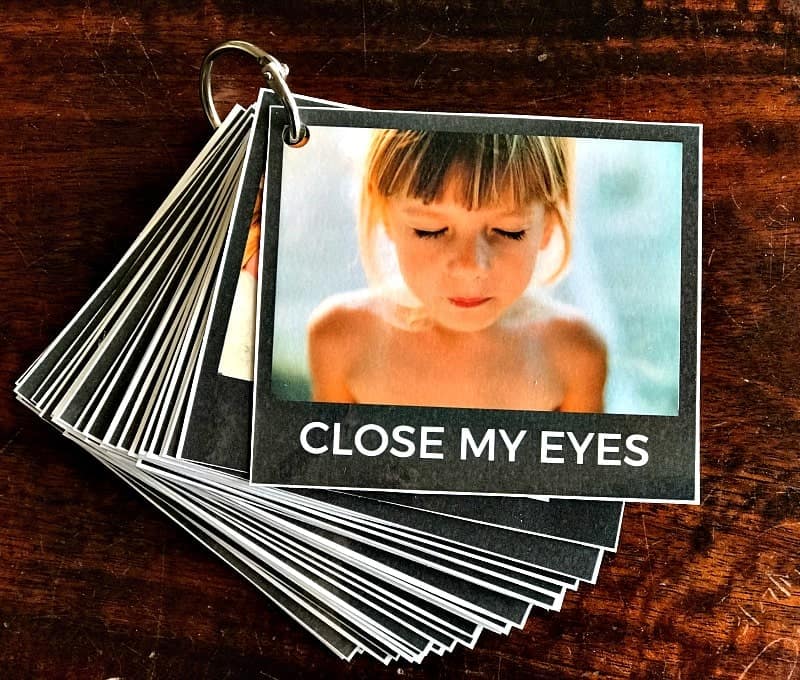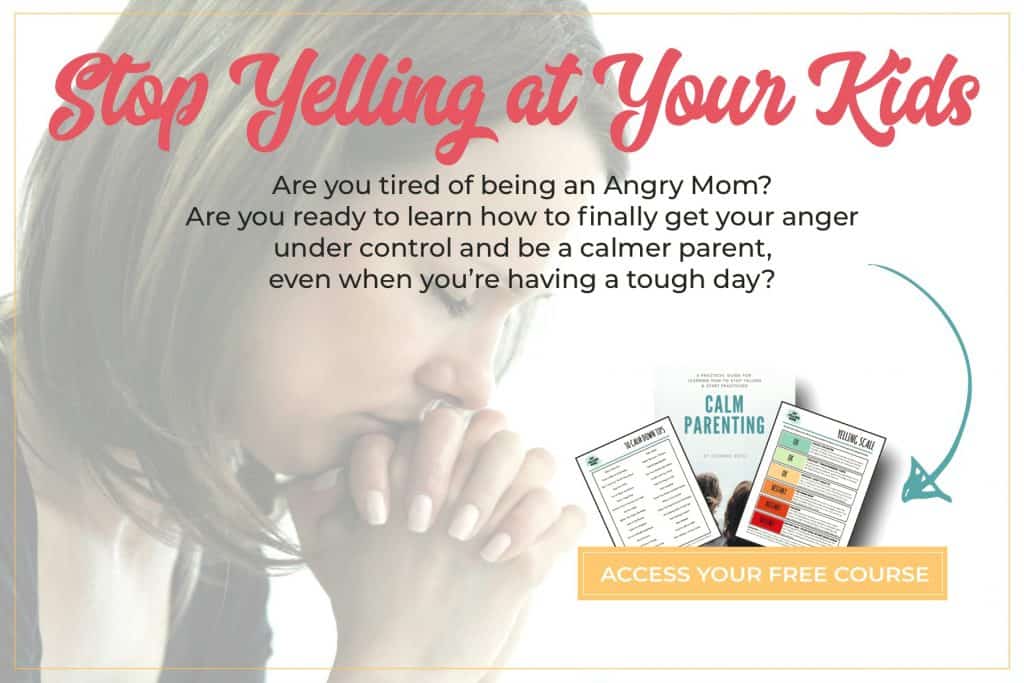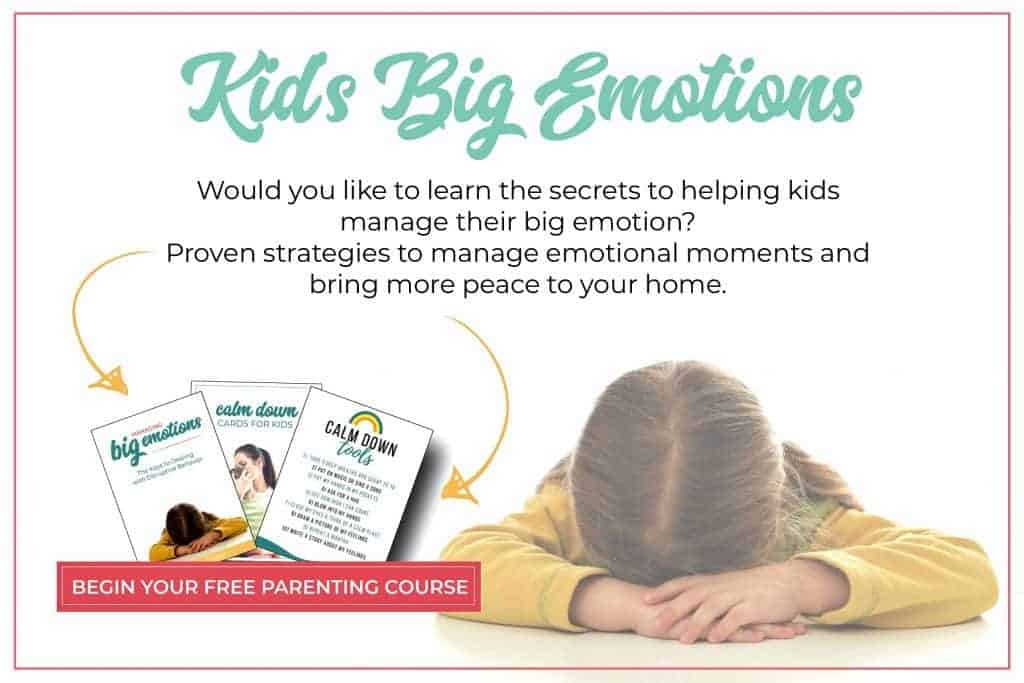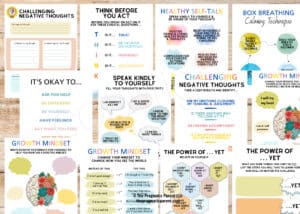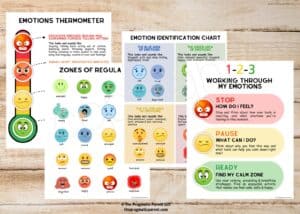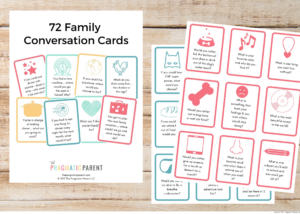How parents can help kids learn to identify and manage big emotions. 5 Steps to teach children how to manage big emotions and deal with feelings plus why every child whose still predominantly a visual learn will thrive with emotion picture cards and Emotion identification tools to help kids identify, name, communicate their feelings and what’s going on under the surface.
Parents: 5 Steps to Teach Kids How to Manage Big Emotions
For most parents, each day you start with a full dose of patience, but as the goes along, your capacity for shrinks.
Think of it your patience like the battery bar on your phone.
- At 7am you are fully charged, blinking full bars at 100%.
- By 10am, it now reads 80%, and by 3pm you’re down to 50%.
- Lunch and naptimes are draining!
- The afternoon juggle and after-school restraint collapse brings you to 35% and the battery life of your patience is dwindling
Maybe it’s the morning hustle of trying to get the kids out the door for school on time, or making dinner while helping with common core math homework and a baby on your hip. It could be your children not listening and repeating yourself 47 times before resorting to raising your voice and worse, yelling.
The afternoon sibling squabbles usually get me the worst and drain my battery because at this point, it’s like I have 25 different apps open on my screen and my patience begins to short circuit.
The list goes on.
How are you supposed to be a role model for your child and show them what it means to manage your emotions and stay calm, when the heat is on?
Being unable to control your own emotions is unhelpful in the grand scheme of things, especially with children watching and learning from your every move. So, while parents need to work hard to manage their own emotions, the other part of the puzzle is teaching children a plan to work through the big emotions when they feel overwhelmed, out of control or upset.
Be sure to grab your free managing big emotions poster at the end of this article.
Want Help Supporting Your Child’s Big Emotions? Check Out These Resources:
Creating a Calm Down Plan for Big Emotions
Preparing kids with solutions to help better manage big emotions such as anger, overwhelm, discouragement, embarrassment and jealousy, not only helps a parent with frayed patience stay calm, but teaches children to find acceptable ways to deal with, and express their emotions.
Emotion picture cards are a simple tool to help kids identify emotions and build emotional intelligence.
Resource: Emotion identification tools help kids identify, name, communicate their feelings and what’s going on under the surface.
5 Steps to Help Kids Manage Big Emotions
Calm down tools help kids build their self-regulatory muscle and find tools that resonate individually with them, including mindful breathing patterns and calming strategies.
-
Take Deep Breaths and Count to 10
Help children understand what they feel is completely normal, but how they react is important to calming down and staying in control.
Taking deep breaths and counting forward and backwards to ten gives children time to recognize their body’s sensations – the anger coursing through them, hands in fists, clenched teeth and fidgeting.
When formulating a plan, talk with your child about how their body feels when they are angry or frustrated and then introduce the idea of taking a few breaths to compose themselves before sorting their emotions, or worse, taking physical action against another person or object.
Ask your child how their body feels and ask about their hands, their heart, teeth, and where you see them holding their feelings physically. Next, have them squeeze that area tightly and then release the tension. Take one more deep breath and release the tension again to calm down.
Once the child can recognize how their body feels, they’ll begin to spot the telltale signs when they begin to buzz with anger, and other feelings, before it gets to the point of erupting.
-
Calm Down in a Calm Place
If your child is really upset, they may feel safest and most comfortable sitting in a calm down spot to cool off. Here is a post on how to create a calm down place in your home that’s equipped with limited sensory and safe items to help your child calm down and work through their emotions.
It’s important to not isolate the child from the rest of the family, but promote the calm down spot as a safe place to go to be by yourself and clear your head, however the proximity is nearby to the central hub of your home, not the next floor up or down.
-
It’s Not Ok to Hurt Anyone
Set clear boundaries it’s never acceptable to hurt, or put hands on another person no matter how upset you feel. This includes personal property cannot be destroyed and hurtful words shouldn’t be hurled as a defense mechanism either.
If your child has aggressive tendencies, have them put their hands in their pockets to keep them from acting out towards others or destroying their belongings.
This printable poster below is free to download and great to print and hang up as a reminder for your child when they are dealing with big emotions!
-
Express Emotions with I Feel Statements
It’s key to teach children that emotions are valid and important, and it’s important to express feelings in acceptable way.
First, acknowledge your child’s feelings by saying them aloud so your child learns to name their feelings.
- I see you are feeling mad because someone took the toy you were playing with.
- It looks like you are feeling embarrassed because you tripped and fell in front of your friends.
Next, once you recognize your child’s feelings, state what you believe they wish would have happened, and a solution to the circumstance.
- You look angry because your sandwich dropped on the floor. You wish you would have used two hands to hold it. Would you like me to whip up another peanut butter & jelly for you? (solution)
The next time your child is overcome with big emotions, coach them through I feel, I wish, and solution statements.
- I feel (__________.) I wish __________. Next time / Can you help me __________.
Help your child work out the emotions and a peaceful solution when they feel overwhelmed, upset, frustrated, embarrassed or jealous.
-
Ask for Help or Comfort
Children often cannot solve a problem on their own, but if they ask an adult to listen to them process their emotions, together they can problem solve and find a solution the child finds acceptable.
Give your child the safety to come to you to ask for help when they feel they can’t problem solve on their own and that it’s OK to ask for help.
Keeping the lines of communication open, and taking opportunities to connect and re-connect with your child makes them feel safe. They’re likely to turn to a parent when they are feeling frustrated or dealing with a problem and need help working through it all, when the lines of communication are strong.
-
Use Calm Down Cards
Calm Down cards are a great tool to give kids options about how they can calm down, and when they have the choice of what they want to do, it’ll help them calm down even faster!
Print this set of calm down cards, laminate if you can, and let your child shuffle through the 45 cards until they find a solution they’re comfortable with.
There are 45 kid-tested methods that will help them cool off when big emotions take hold!
The best part?
With consistent practice of using the calm down card set, kids will turn to their set of calm down cards without any prompting from an adult and begin to self-manage their big feelings all on their own!
Grab Your Free Download: Managing Big Emotions Poster
Additional Big Emotions Resources
- Create a Quiet Spot at Home For Your Child to Calm Down
- Helping Kids with Transitions: Switching Gears without Tears
- Navigating the After-School Meltdown: How to Help Your Child
- 6 Ways to Help Children Identify & Express Their Emotions
- Help Your Children Understand Emotions and Develop the Emotional Intelligence They Need


